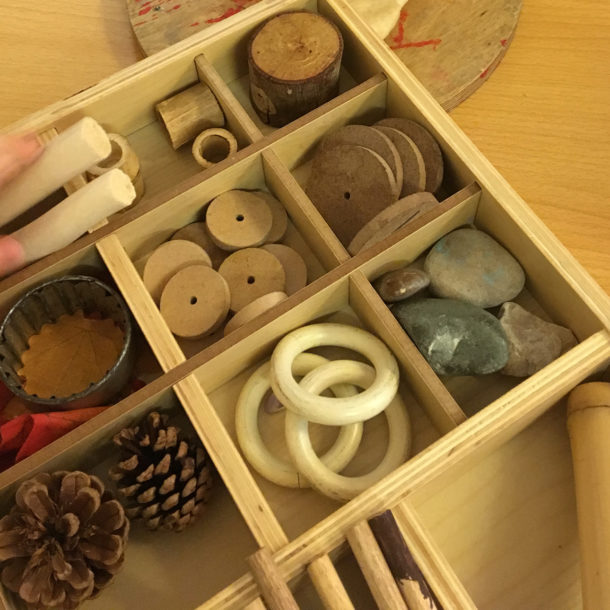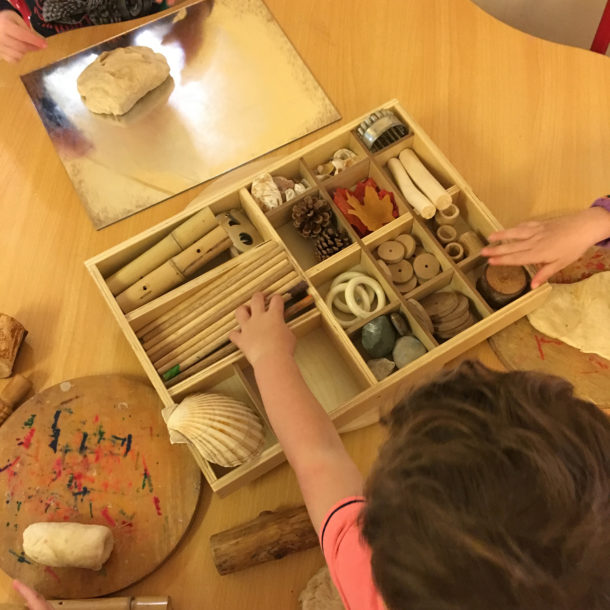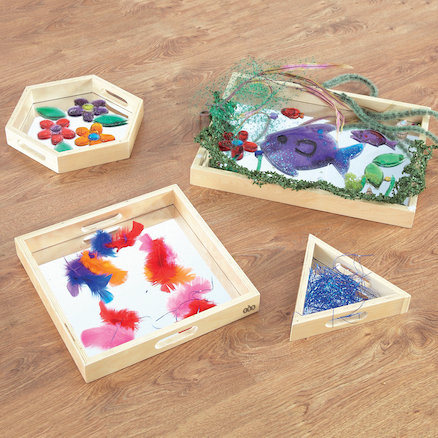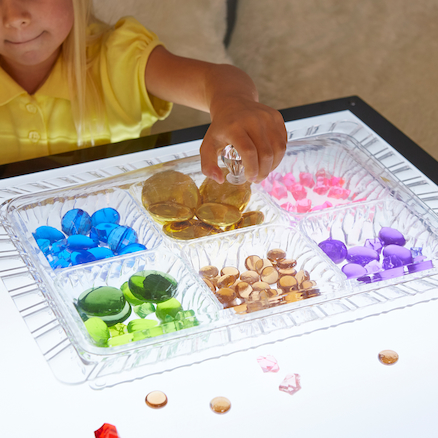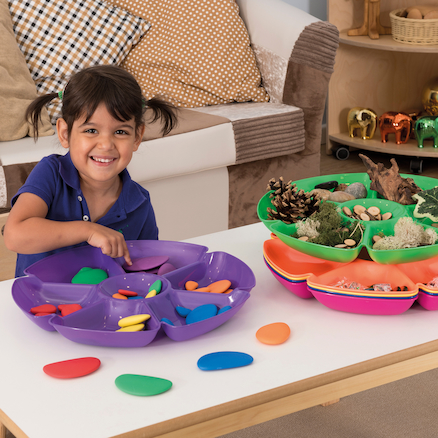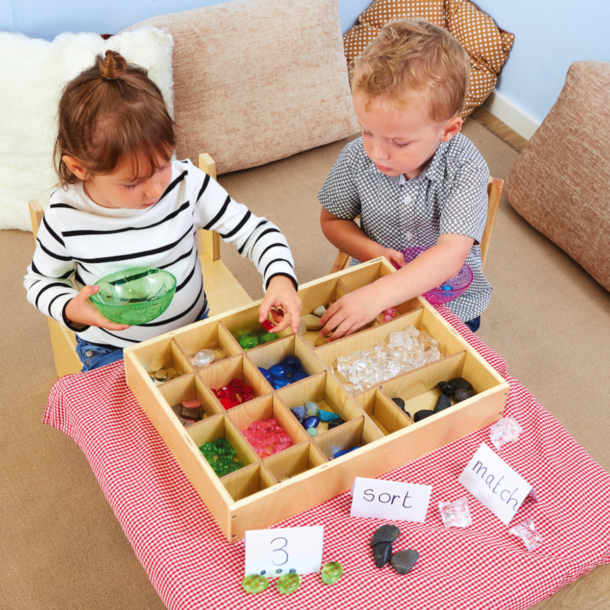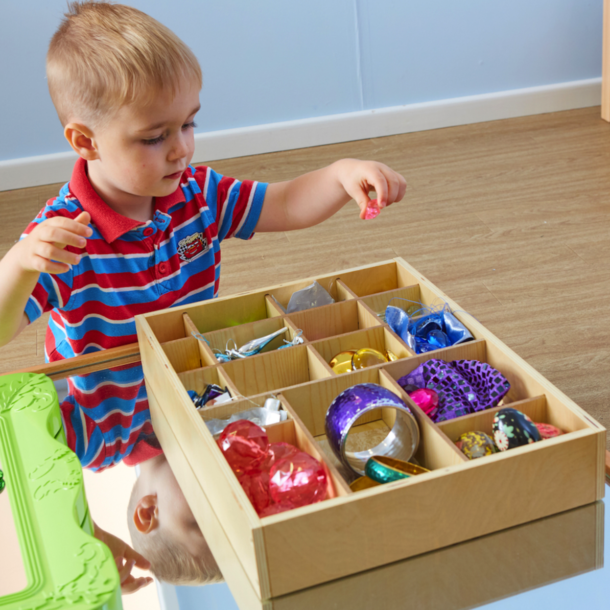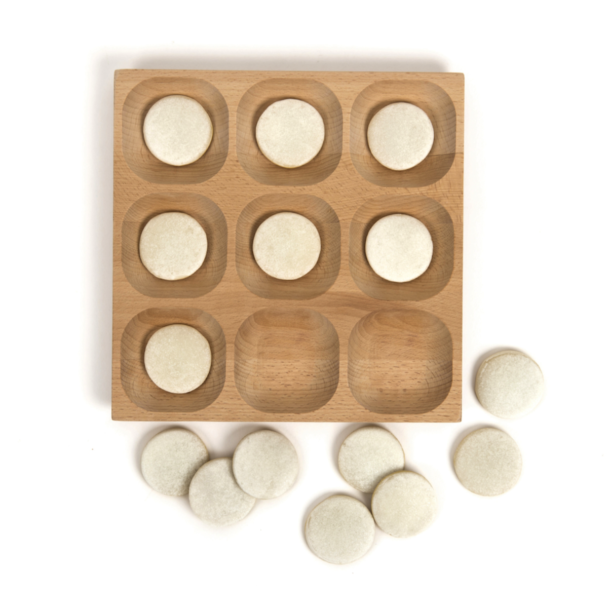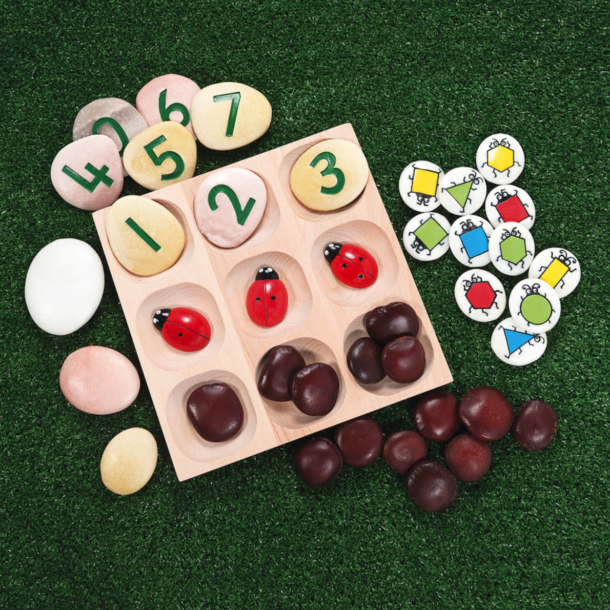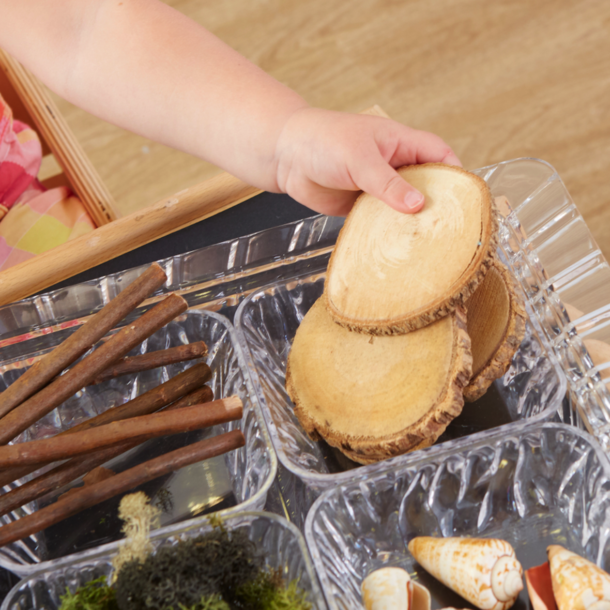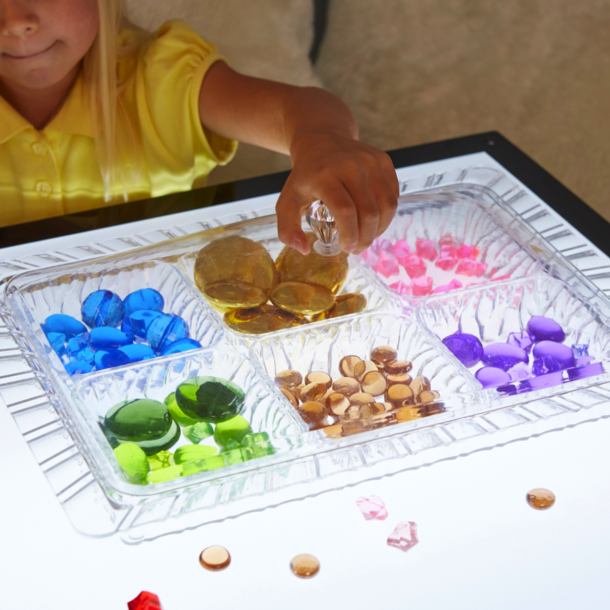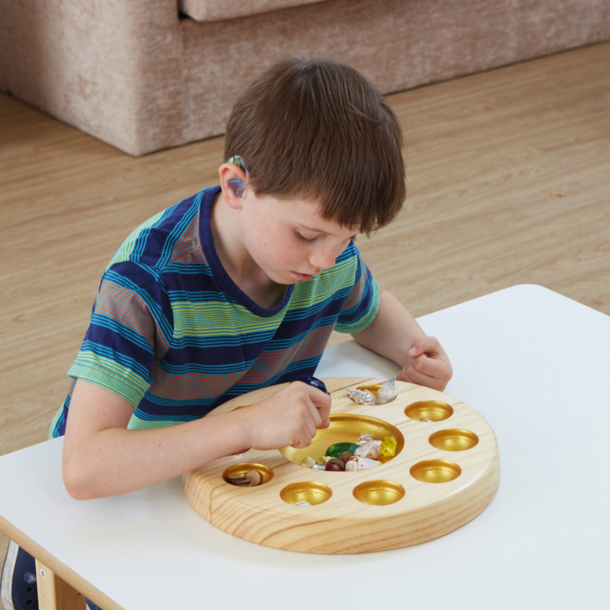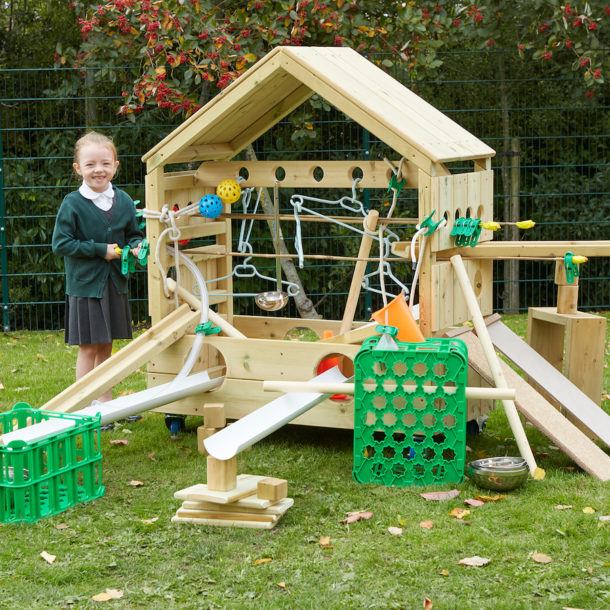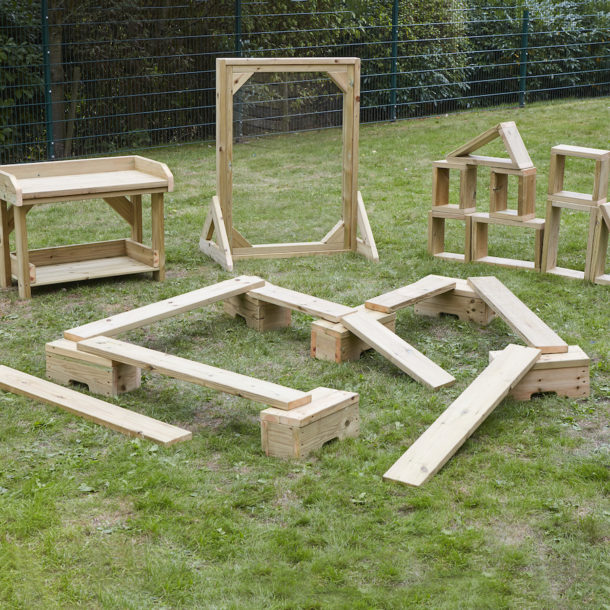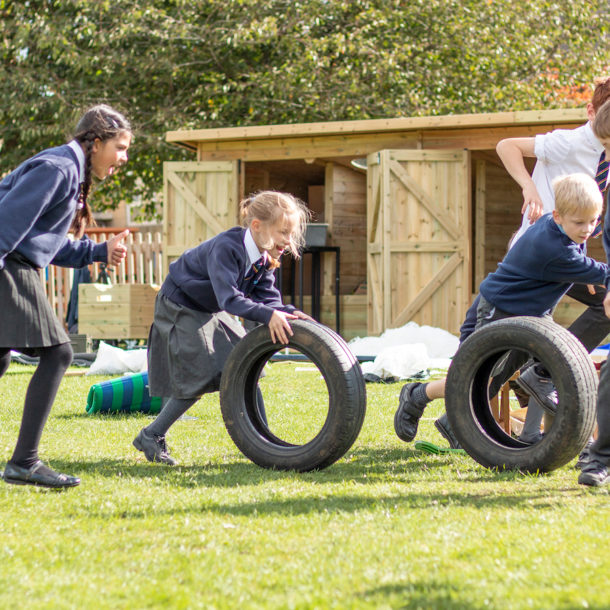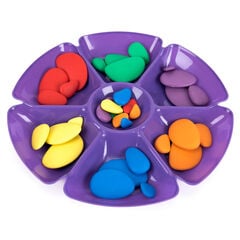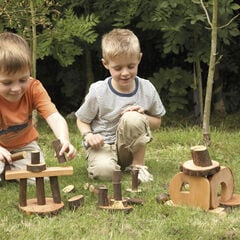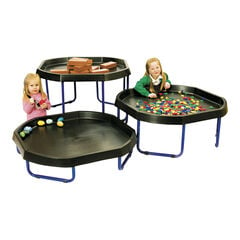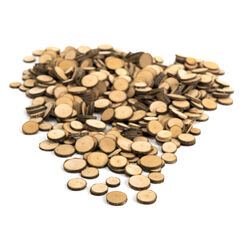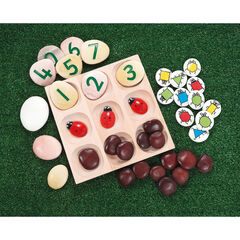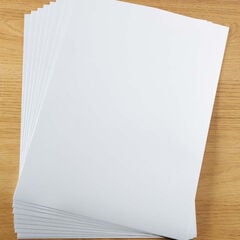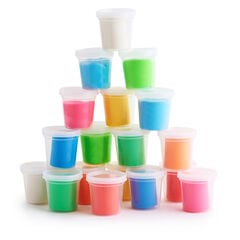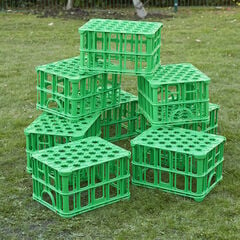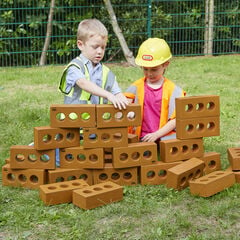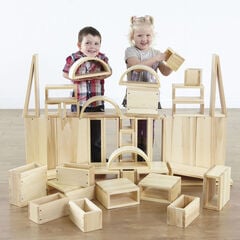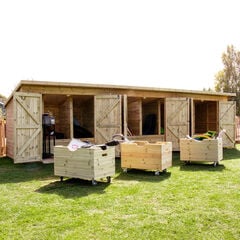Tinker trays can be filled with a multitude of different items; natural, found, scrap and man-made. You could theme them to fit in with a topic of interest or simply collect natural items from your outdoor area. Whatever you fill your tinker tray with, the children can find lots of uses for the items. The tray itself could be as simple as a cutlery holder, egg box or cupcake tin. I have a fondness for this particular large wooden tray.
Why I love tinker trays
- Tinker tray items are open-ended. Trays allow children to be creative and to explore the items in a way that interests them. They might add bits to their artwork, create structures or even explore schemas through the items available.
- They are great for introducing loose parts. If you are looking at introducing loose parts freely within your continuous provision and are afraid of the mess or risks they pose, why not opt for a tinker tray to begin with?
- Tinker trays provide a wealth of sensory experiences. Think about the different textures, scents and sounds that will be experienced through tinkering, especially with natural items.
- Children will explore mathematical concepts of shape, space and number as they explore how they can fill the tray with items.
- Children will be exposed to a wider breadth of language as they describe and discuss tinker tray items alongside an adult.
- Tinker trays are developmentally appropriate for all ages and stages of development as they have no pre-planned outcomes.
Tinker tray ideas
- Provide a tinker tray alongside mirrors. Children can look at themselves whilst creating a loose parts self-portrait.
- Provide playdough. Children can explore different marks that a variety of items create in the dough.
- Each child could have a clay square and allow them to decorate it in their own individual way. Display the tiles as a representation of each child.
- You could involve parents by asking them to take their child on a tinker tray hunt. The children can add the items they find to a communal tinker tray.
View our loose parts, tinker trays, sorting trays and natural resources over on our website
With thanks to Laura England – Little Miss Early Years – an early years teacher, enthusiast and blogger for this wonderful insight into tinker trays loose part play.
Get outdoors with large loose part play:




